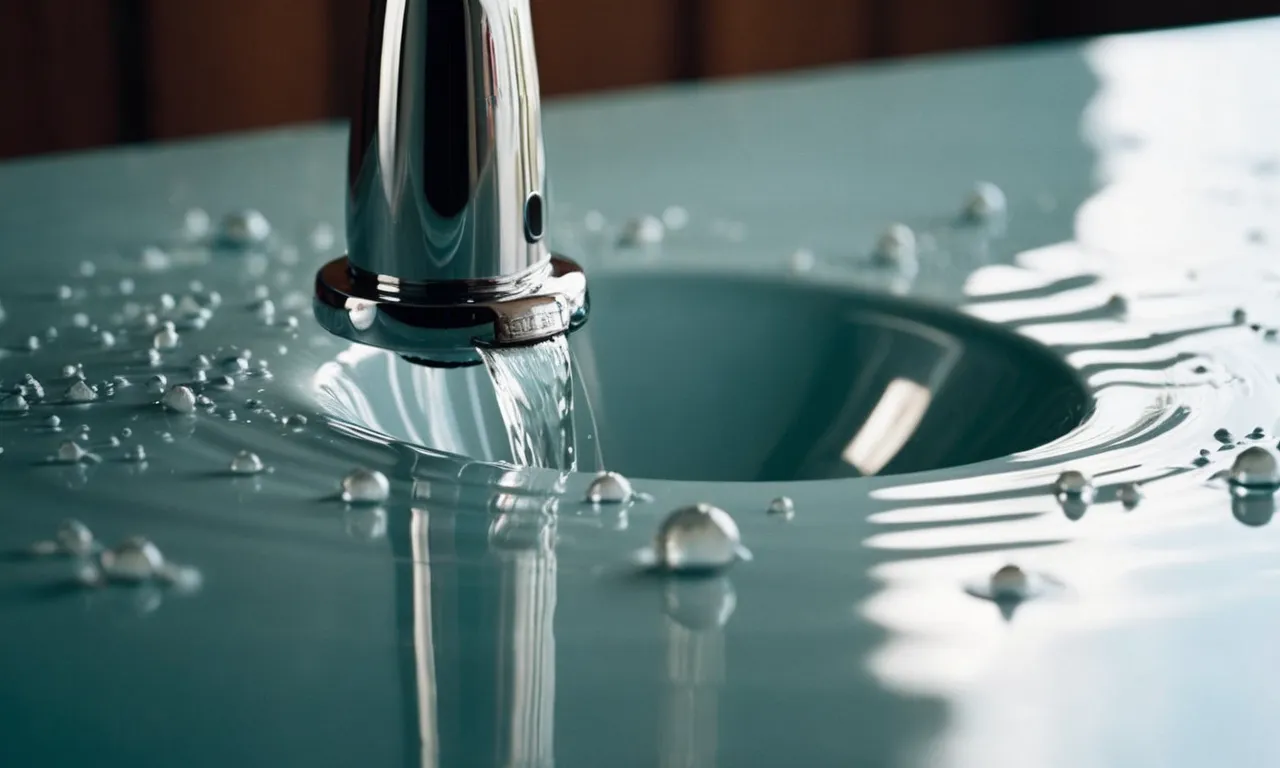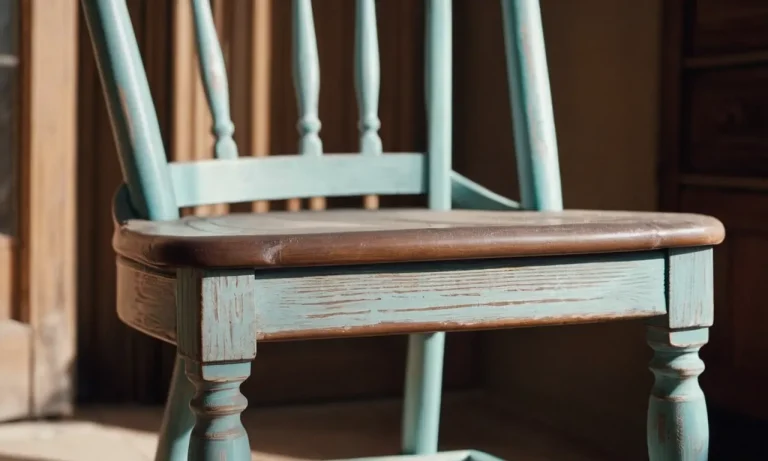How To Fix A Shower Faucet That Leaks When Turned Off
A shower faucet that continues leaking after being turned off can be annoying and waste water. If you’re looking for answers, you’ve come to the right place. We’ll walk you through several methods to fix this common plumbing issue.
If you’re short on time, here’s a quick answer to your question: The most likely causes of a leaking shower faucet are worn washers or seats in the faucet assembly. Replacing these parts should stop the leak.
In this comprehensive guide, we’ll cover the potential causes of a leaking shower faucet and explain with step-by-step instructions how to fix it yourself. You’ll also learn when it’s better to call a plumber.
Determining the Cause of a Leaky Shower Faucet
A leaky shower faucet can be a frustrating problem to deal with. Not only does it waste water, but it can also lead to mold and mildew growth if left untreated. Before you can fix the issue, it’s important to determine the cause of the leak. Here are some common culprits:
Worn Washers or O-Rings
One of the most common causes of a leaky shower faucet is worn washers or O-rings. Over time, these small rubber components can become worn out or damaged, causing water to seep through. This is often accompanied by a dripping sound or a constant stream of water even when the faucet is turned off.
Replacing the washers or O-rings is a relatively simple fix that can be done with basic tools.
Corroded or Damaged Valve Seats
Another potential cause of a leaky shower faucet is corroded or damaged valve seats. The valve seat is a small component that connects the faucet handle to the spout. If it becomes corroded or damaged, it can prevent the faucet from fully shutting off, resulting in a leak.
In some cases, the valve seat may need to be cleaned or replaced to fix the issue. This requires a bit more effort and may require the help of a professional plumber.
Mineral Buildup and Corrosion
Mineral buildup and corrosion can also contribute to a leaky shower faucet. Over time, minerals from the water can accumulate inside the faucet, causing it to become clogged or corroded. This can affect the proper functioning of the faucet and lead to leaks.
Regular cleaning and maintenance can help prevent mineral buildup and corrosion. Using a mixture of vinegar and water to soak the faucet can help remove any deposits and restore its functionality.
Remember, it’s important to address a leaky shower faucet as soon as possible to prevent further damage and water wastage. If you’re unsure about how to fix the issue, it’s always best to seek the help of a professional plumber.
Fixing a Leaky Shower Faucet
A leaky shower faucet can be quite annoying, not to mention it can waste a significant amount of water and drive up your utility bills. Fortunately, there are several steps you can take to fix a shower faucet that leaks when turned off. Here are some common solutions:
Replacing the Faucet Washers
One of the most common causes of a leaky shower faucet is worn-out or damaged washers. Over time, the constant use of the faucet can cause the washers to deteriorate, resulting in leaks. To fix this issue, you will need to replace the washers. Start by turning off the water supply to the shower.
Then, remove the faucet handle and unscrew the valve stem. Take out the old washer and replace it with a new one. Finally, reassemble the faucet and turn the water supply back on. This should resolve the leaky faucet problem.
Replacing the Valve Seats
If replacing the washers doesn’t fix the leak, the problem may lie with the valve seats. Valve seats can become corroded or worn, preventing a proper seal and causing leaks. To replace the valve seats, you will need a valve seat wrench.
Insert the wrench into the seat and turn it counterclockwise to remove the old seat. Replace it with a new one of the same size and tighten it with the wrench. Reassemble the faucet and test for leaks.
Cleaning Mineral Buildup
Mineral buildup, such as limescale, can also contribute to a leaky shower faucet. Over time, minerals from the water can accumulate and clog the faucet, causing leaks. To clean the mineral buildup, you can use a descaling solution or vinegar.
Remove the faucet handle and soak it in the solution for a few hours. Scrub away any remaining buildup with a brush. Rinse the parts thoroughly and reassemble the faucet. This should help eliminate any leaks caused by mineral deposits.
Replacing the Cartridge or Stem
If the above methods do not fix the leak, the problem may be with the cartridge or stem. These components control the flow of water and can wear out over time. To replace the cartridge or stem, you will need to turn off the water supply, remove the faucet handle, and unscrew the cartridge or stem.
Take it to a hardware store to find an exact replacement and install it following the manufacturer’s instructions. Reassemble the faucet and turn the water supply back on. This should resolve the leaky faucet issue.
Remember, if you are not confident in your plumbing skills, it’s always best to call a professional plumber who can diagnose and fix the problem correctly. Taking the DIY route can save you money, but it’s important to know your limitations to avoid causing further damage to your shower faucet.
Preventing Future Leaks
Use a Water Softener
One effective way to prevent future leaks in your shower faucet is by using a water softener. Hard water contains minerals like calcium and magnesium that can build up inside the faucet and cause blockages or damage to the internal components.
By installing a water softener, you can reduce the hardness of your water, preventing mineral buildup and prolonging the life of your faucet.
Did you know? According to a study by the Water Quality Association, hard water can reduce the lifespan of plumbing fixtures by up to 30%. Using a water softener can help prevent this damage and save you money in the long run.
Clean the Faucet Regularly
Regular cleaning is essential in preventing leaks in your shower faucet. Over time, dirt, soap scum, and mineral deposits can accumulate on the faucet’s surfaces, causing it to malfunction or leak. To clean your faucet, start by removing any visible debris with a soft cloth or sponge.
Then, mix a solution of equal parts water and vinegar and use a toothbrush or small brush to scrub the faucet thoroughly. Rinse with water and dry with a clean cloth. Regular cleaning will help keep your faucet in optimal condition and prevent leaks.
Pro tip: To keep your shower faucet looking shiny and new, you can also use a mild soap and warm water solution to clean it. Just make sure to rinse thoroughly to remove any soap residue.
Replace Old or Damaged Parts
If you have an older shower faucet or notice any signs of wear and tear, it may be time to replace some of the parts. Over time, the internal components of a faucet can deteriorate, leading to leaks when the faucet is turned off.
Common parts that may need replacement include the cartridge, O-rings, and washers. You can find replacement parts at your local hardware store or online. It’s important to follow the manufacturer’s instructions or consult a professional plumber to ensure proper installation.
Fun fact: Did you know that a dripping faucet can waste up to 3,000 gallons of water per year? By replacing old or damaged parts, you can save water and reduce your utility bills!
By following these preventive measures, you can avoid future leaks in your shower faucet and ensure its longevity. Remember, it’s always a good idea to consult a professional plumber if you’re unsure about any repairs or replacements.
When to Call a Professional Plumber
Fixing a shower faucet that leaks when turned off can be a frustrating and time-consuming task. While some minor leaks can be fixed by homeowners themselves, there are certain situations when it is best to call a professional plumber.
Here are some instances when you should consider seeking professional help:
1. Severe Leaks:
If the leak is significant and causing water damage to your walls, floors, or ceiling, it is essential to call a professional plumber immediately. They have the expertise and equipment to quickly locate the source of the leak and repair it effectively.
Ignoring severe leaks can lead to more extensive damage and higher repair costs in the long run.
2. Complex Repairs:
If you have attempted to fix the shower faucet yourself but are unable to identify the problem or successfully complete the repair, it is time to call in a professional. They have the necessary knowledge and experience to handle complex repairs and ensure that the issue is resolved correctly.
3. Lack of Experience:
If you are not familiar with plumbing systems or have limited experience with DIY repairs, it is best to leave the job to a professional. Plumbing systems can be intricate, and attempting to fix a shower faucet without proper knowledge can lead to further damage or even cause a more significant plumbing problem.
4. Time Constraints:
If you have a busy schedule or lack the time to dedicate to fixing the shower faucet, it is advisable to hire a professional plumber. They have the necessary tools and expertise to diagnose and repair the issue efficiently, saving you time and hassle.
Conclusion
A leaky shower faucet can often be fixed with some basic tools and DIY know-how. In most cases, replacing a couple inexpensive rubber washers or valve seats will stop the drip. But for more stubborn leaks or complex faucet issues, don’t hesitate to call a plumber.
With the right parts and expertise, they can get your shower working like new again.







